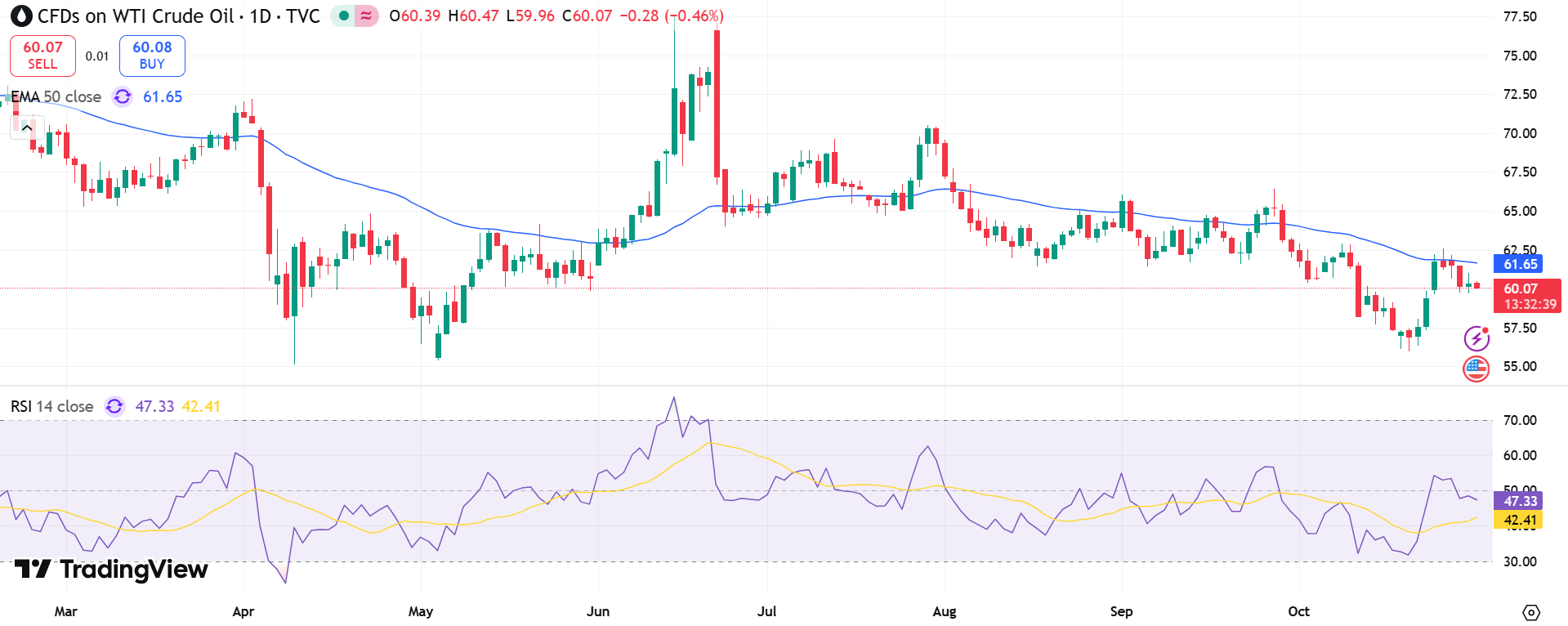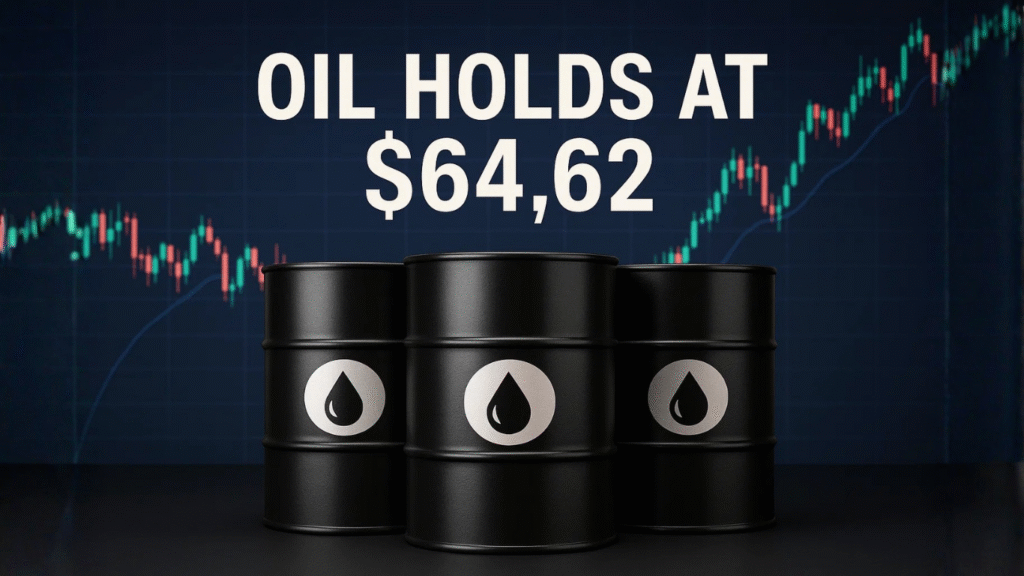Oil prices held steady on Thursday after U.S. President Donald Trump announced a reduction in tariffs on Chinese goods — from 57% to 47% — following discussions with President Xi Jinping in South Korea. The move signals a potential thaw in trade tensions that have weighed on global growth and energy demand for months.
By 05:31 GMT, Brent crude slipped 0.46% to $64.62 per barrel, while West Texas Intermediate (WTI) eased 0.51% to $60.17. Both benchmarks had climbed in the previous session, reflecting cautious optimism about improved trade flows and renewed economic activity.
The tariff reduction, part of a one-year agreement, includes Beijing’s pledge to resume U.S. soybean purchases, maintain exports of rare earth materials, and intensify efforts to curb fentanyl smuggling — a deal analysts say could restore some confidence to global markets.
Analysts See Limited Upside for Oil Prices
Market experts remain cautiously optimistic.
- Sugandha Sachdeva, founder of SS WealthStreet, said that as long as Brent crude stays above $58–$60 per barrel, a short-term rebound is possible.
- However, she expects gains to remain capped near $72, pointing to a likely range-bound pattern through the rest of the quarter.
Supporting the broader market, the U.S. Federal Reserve cut interest rates on Wednesday — a move aligned with expectations. Yet, policymakers hinted it could be the final reduction this year amid uncertainty caused by the ongoing U.S. government shutdown.
According to Rystad Energy’s chief economist Claudio Galimberti, “The Fed’s decision signals a shift toward reflationary policy — a stance that could support commodities tied to economic momentum, including oil.”

OPEC+ Meeting and Inventory Data in Focus
The Energy Information Administration (EIA) reported a sharp 6.86 million-barrel drop in U.S. crude inventories last week, far exceeding forecasts for a mere 211,000-barrel draw. Despite this, both Brent and WTI remain on track for over 3% losses in October, marking their third consecutive monthly decline.
Traders are now turning attention to the upcoming OPEC+ meeting on November 2, where the group is expected to approve a 137,000 barrels-per-day output increase for December. Since April, the alliance has gradually restored 2.7 million bpd of production — about 2.5% of global supply — partially offsetting the steep cuts of prior years.


